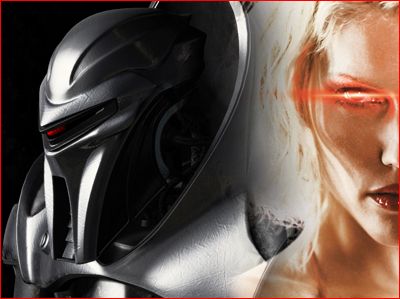 any more.
any more.The idea is to develop software to make a collection of robots smart enough to break into, explore and neutralize deep bunkers. The challenges are gigantic.
The robots have to deal with an unspecified number of unknown obstacles as they travel via cable runs, air ducts, service pipes or other channels, dealing with grilles, bars, doors or other checks.
Then they need to correctly identify the target (waste bin, or WMD container?), which is easy for people but hard for robots – and this task requires being out of radio contact.
They have to act in concert and help rather than hinder each other, co-ordinating their efforts to explore and map the facility.
And all the time they have to be able to avoid, outwit or defeat the human defenders of the bunker, whose tactics, numbers and abilities cannot be predicted.
Thaler’s believes his software can do all this. It’s an unusual neural network with the ability to ‘dream up’ new ideas, exploring likely approaches before putting them into action. For example, give it a set of robotic limbs and it will quickly find the most effective way of using them – a video here shows a six-legged robot figuring out how to walk from scratch with no programming in eight minutes flat.
Imagination Engines’ capabilities also extend to sensors. Thaler describes products including a million-pixel array which can interpret input ‘an order of magnitude’ faster than any comparable system and another with formidable powers of recognition, such as distinguishing a T-72 from an Abrams. There is no programming involved: just show the system the two different objects and it figures out how to tell them apart.
The most guarded aspect of the Creative Robots is their tactical intelligence, which seems to be considerable – Thaler describes them as "Machiavellian" in how devious they can be. The Creativity Machine's ability to explore the entire range of possibilities means that in principle it could dream up any tactic that a human could, and more besides.
Within the next few months the software toolkit for Creative Robots will be available for the military. It will run on any standard hardware, turning a pack of dumb robots into smart team players capable of carrying out missions on their own. Thaler believes their speed makes Creative Robots superior to those that rely on human control, “performing at near-human levels of intelligence at Terahertz clock rates, while our joy-stick controlled robots are performing effectively at the 4 Hz clock rates characteristic of the brain.”
The possibilities for civilian use are tremendous. There are a vast number of ‘hard problems’ involved in getting robots to interact with the everyday world which require intelligence. Thaler believes that he has the solution. Look out for a host of commercial and industrial applications.
Dean Vieau, a consultant with many years of experience in the fields of Controls and Machine Vision, is an enthusiastic supporter. In one case study he carried out, Vieau found that a solution using Imagination Engines software was twenty times faster to develop and a hundred times cheaper than the existing approach.
“Imagination Engines represents a significant advancement in the realms of AI. Not just esoteric academic conjecture but real world paths to concrete results.”
As usual the military are developing world-changing technology that will filter down to the rest of us later. But are we really ready for killer robots yet?
Not Cylons.
 Replicators.
Replicators.

No comments:
Post a Comment